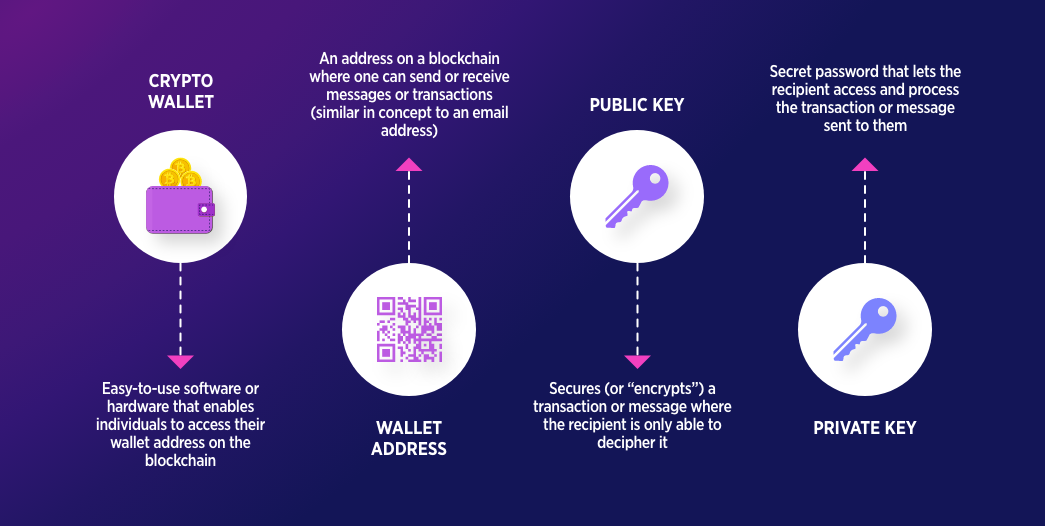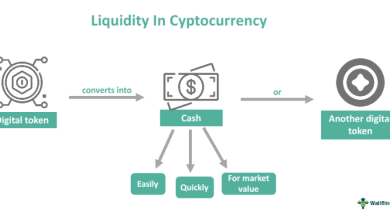What Is a Crypto Wallet and How Does It Work?

Cryptocurrencies like Bitcoin (BTC) and Ethereum (ETH) have revolutionized finance, enabling decentralized, peer-to-peer transactions.
A critical component of engaging with cryptocurrencies is a crypto wallet, a tool that allows users to store, send, and receive digital assets securely.
As of July 2025, with the crypto market thriving and adoption growing, understanding crypto wallets is essential for beginners and seasoned investors alike.
This article explains what a crypto wallet is, how it works, the different types available, their benefits, risks, and best practices for safe usage.
What Is a Crypto Wallet?
A crypto wallet is a software program or physical device that enables users to interact with a blockchain to manage their cryptocurrencies.
Unlike a physical wallet that holds cash or cards, a crypto wallet does not store digital coins directly. Instead, it holds cryptographic keys—private and public keys—that grant access to a user’s funds on the blockchain.
These keys allow users to send, receive, and track their cryptocurrency holdings securely.
Key Components of a Crypto Wallet
-
Private Key: A secret code (like a password) that authorizes transactions and proves ownership of funds. Losing or exposing the private key means losing access to the crypto or risking theft.
-
Public Key/Address: A shareable identifier (like a bank account number) used to receive cryptocurrencies. It is derived from the private key but cannot be reverse-engineered.
-
Seed Phrase: A series of 12–24 words generated when setting up a wallet, serving as a backup to recover access if the private key is lost. It must be stored securely offline.
How Does a Crypto Wallet Work?
Crypto wallets interact with blockchains, the decentralized ledgers that record cryptocurrency transactions. Here’s how they function:
-
Creating a Wallet: When a user sets up a wallet, it generates a pair of cryptographic keys (private and public). The public key creates a wallet address, which others can use to send crypto.
-
Receiving Crypto: To receive funds, the user shares their wallet’s public address. The sender initiates a transaction, which is recorded on the blockchain.
-
Sending Crypto: To send crypto, the user enters the recipient’s address and the amount in their wallet interface. The wallet signs the transaction with the private key, proving ownership, and broadcasts it to the blockchain network.
-
Verification: Nodes on the blockchain verify the transaction’s validity (e.g., ensuring sufficient funds). Once confirmed, the transaction is added to a block and permanently recorded.
-
Balance Tracking: The wallet queries the blockchain to display the user’s balance, which is the total unspent crypto associated with their public address.
-
Security: The private key remains on the user’s device (or hardware wallet), ensuring only they can authorize transactions.
Wallets can interact with multiple blockchains (e.g., Bitcoin, Ethereum, Solana), depending on their design, allowing users to manage various cryptocurrencies in one interface.
Types of Crypto Wallets
Crypto wallets are broadly categorized into hot and cold wallets, each with distinct features, benefits, and risks.
1. Hot Wallets
Hot wallets are software-based and connected to the internet, making them convenient but less secure.
-
Examples: MetaMask, Coinbase Wallet, Trust Wallet.
-
Types:
-
Mobile Wallets: Apps for smartphones (e.g., Trust Wallet).
-
Desktop Wallets: Software for computers (e.g., Exodus).
-
Web Wallets: Browser-based wallets, often integrated with exchanges (e.g., Binance’s web wallet).
-
-
Pros: Easy to use, ideal for frequent transactions, often free, support multiple cryptocurrencies.
-
Cons: Vulnerable to hacks, phishing, and malware if the device is compromised.
2. Cold Wallets
Cold wallets are offline, providing higher security for long-term storage.
-
Examples: Ledger Nano X, Trezor Model T.
-
Types:
-
Hardware Wallets: Physical devices that store keys offline.
-
Paper Wallets: Printed QR codes of private and public keys (less common in 2025 due to complexity).
-
-
Pros: Highly secure, resistant to online attacks, ideal for large holdings.
-
Cons: Less convenient for frequent transactions, costs money to purchase, risk of physical loss or damage.
3. Custodial vs. Non-Custodial Wallets
-
Custodial Wallets: Managed by a third party (e.g., exchange wallets like Coinbase or Binance). The provider controls the private keys, simplifying usage but reducing user control.
-
Non-Custodial Wallets: Users control their private keys (e.g., MetaMask, Ledger). These offer greater security and autonomy but require more responsibility.
Benefits of Crypto Wallets
-
Accessibility: Enable users to send and receive crypto globally, requiring only an internet connection (for hot wallets).
-
Control: Non-custodial wallets give users full ownership of their funds, aligning with the decentralized ethos of crypto.
-
Versatility: Support multiple cryptocurrencies and blockchain interactions, such as DeFi, NFTs, or staking.
-
Financial Inclusion: Provide access to financial services for the unbanked, especially in regions with limited banking infrastructure.
-
Security: Cold wallets and secure non-custodial wallets protect funds from centralized failures, like exchange hacks.
Risks and Challenges
-
Loss of Keys: Losing a private key or seed phrase results in permanent loss of funds, with no recovery option.
-
Hacks and Phishing: Hot wallets are vulnerable to malware, phishing scams, or compromised devices. Exchange hacks (e.g., Mt. Gox in 2014) have led to significant losses.
-
Complexity: Managing keys and seed phrases can be daunting for beginners, leading to errors.
-
Regulatory Risks: Some regions impose restrictions on crypto, affecting wallet usage or fund access.
-
Custodial Risks: With custodial wallets, users rely on the provider’s security, risking losses if the platform fails or is hacked.
Crypto Wallets in 2025
As of July 2025, crypto wallets have evolved significantly. Hot wallets like MetaMask and Trust Wallet integrate seamlessly with DeFi platforms and NFT marketplaces, supporting ecosystems like Ethereum and Solana.
Hardware wallets like Ledger and Trezor offer advanced features, such as Bluetooth connectivity and multi-chain support. Custodial wallets on exchanges like Coinbase are popular for beginners due to their simplicity, but non-custodial options are gaining traction as users prioritize control.
The rise of mobile and browser-based wallets reflects growing mainstream adoption, with Bitcoin trading between $50,000 and $80,000 and Ethereum targeting $4,000–$6,000.
Best Practices for Using Crypto Wallets
-
Choose the Right Wallet: Use hot wallets for small, frequent transactions and cold wallets for long-term storage of significant holdings.
-
Secure Your Keys: Store private keys and seed phrases offline (e.g., on paper or a secure USB). Never share them or store them digitally.
-
Enable 2FA: Use two-factor authentication (preferably authenticator apps, not SMS) for exchange accounts and hot wallets.
-
Verify Platforms: Download wallets from official sources and double-check URLs to avoid phishing scams.
-
Backup Regularly: Save multiple copies of your seed phrase in secure, offline locations (e.g., a safe or bank vault).
-
Start Small: Test wallets with small amounts to understand their functionality before transferring large sums.
-
Stay Informed: Monitor wallet updates, security advisories, and regulatory changes via trusted sources like CoinDesk or X communities.
Getting Started with a Crypto Wallet
-
Select a Wallet: Choose based on your needs (e.g., MetaMask for DeFi, Ledger for security).
-
Set Up the Wallet: Follow the provider’s instructions to generate keys and a seed phrase. Write down the seed phrase and store it securely.
-
Buy Crypto: Purchase Bitcoin, Ethereum, or other coins via exchanges like Coinbase or Binance and transfer them to your wallet.
-
Test Transactions: Send a small amount to another address to familiarize yourself with the process.
-
Learn More: Explore resources like Binance Academy, Mastering Bitcoin by Andreas Antonopoulos, or online courses to deepen your understanding.





